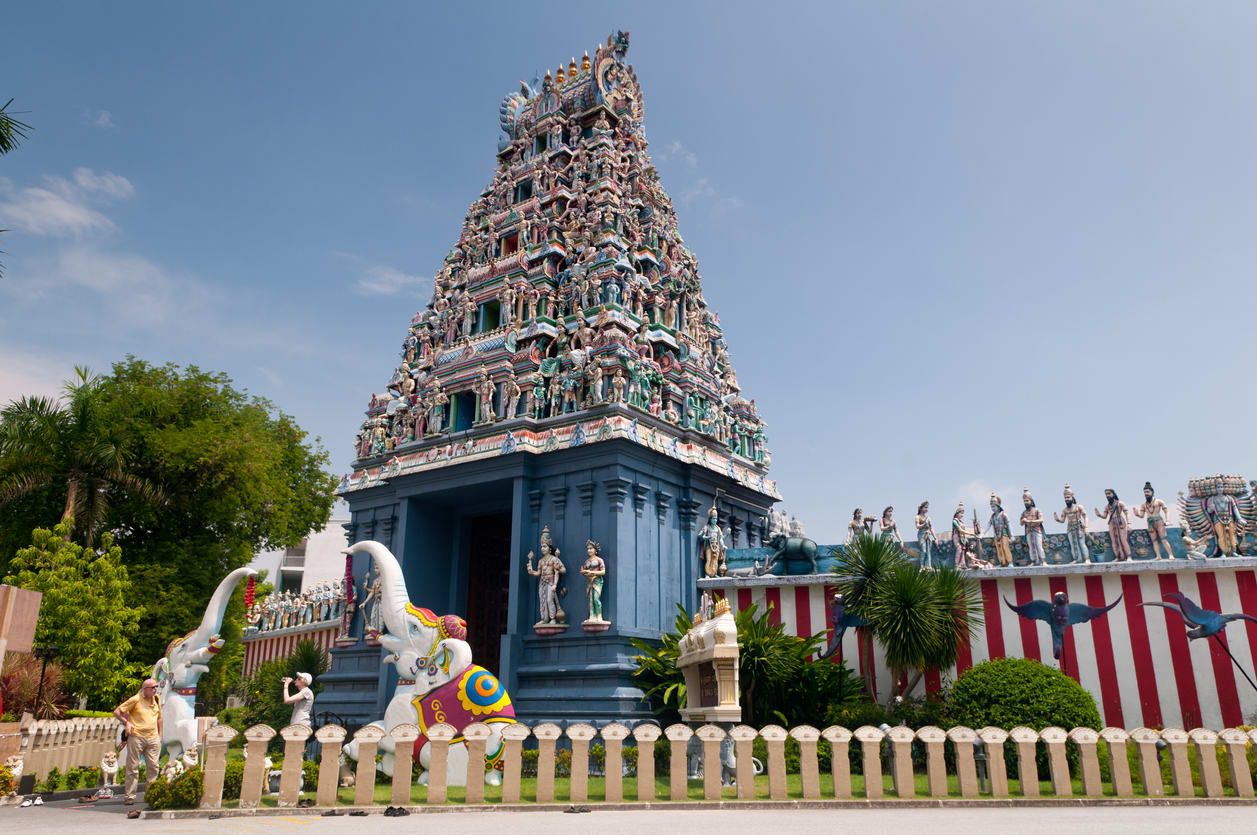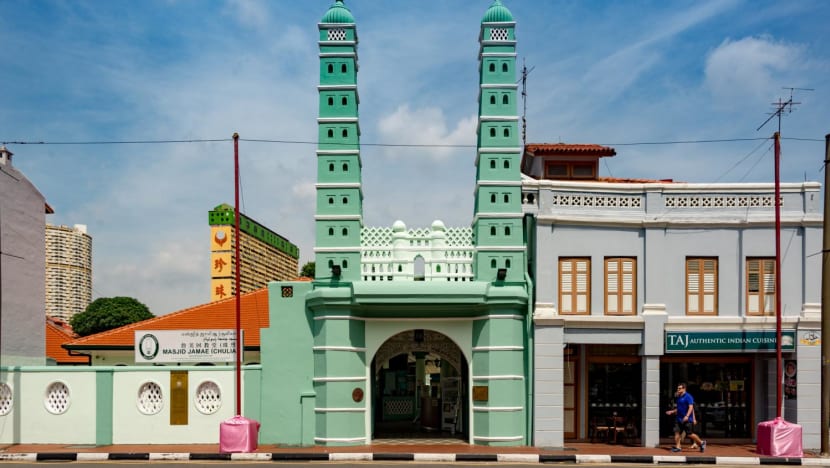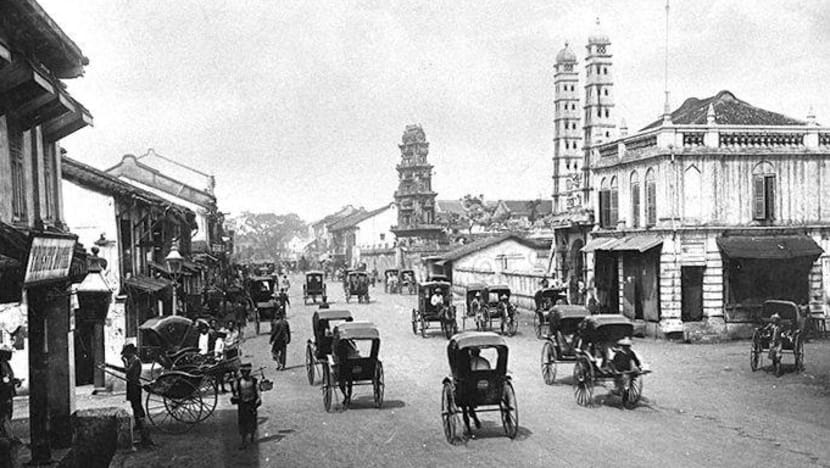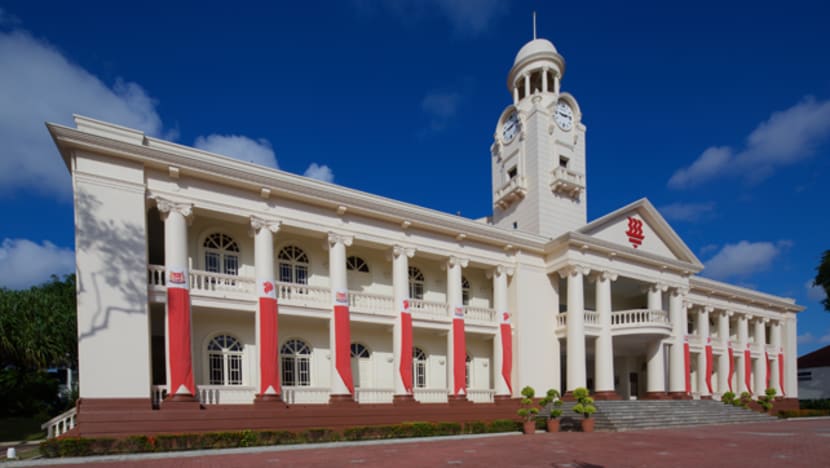Five on Friday: 5 national monuments in Singapore that may surprise you
In CNA's regular look at what hit the headlines during the week, Five on Friday looks at five national monuments that also deserve their time in the spotlight.

The front view of the Old Hill Street Police Station, taken on Feb 19, 2017. (Photo: iStock/efired)
SINGAPORE: On National Day this year, the Padang was gazetted as Singapore's 75th national monument.
This makes it the first open green space to be afforded the highest level of protection under the Preservation of Monuments Act.
It joins other iconic national monuments in its vicinity, including Saint Andrew's Cathedral and the former City Hall and former Supreme Court buildings.
But what surprised many people was that there are 74 other buildings in the same list. You may have found yourself asking - what and where are they?
Here are five national monuments in Singapore that may surprise you.
SRI SRINIVASA PERUMAL TEMPLE

The Sri Srinivasa Perumal Temple in Little India was gazetted as a national monument in 1978, almost a century after its construction in 1885.
It is the first Hindu temple in Singapore dedicated to the deity Sri Perumal, more commonly known as Vishnu.
The temple was initially called the Sri Narasimha Perumal Temple and built by influential community leaders who had close working ties with the then East India Company.
After it was rebuilt in 1965, the temple's chief deity was changed from the imposing lion-headed Sri Narasimha to the gentler Sri Srinivasa Perumal, on the advice of elders.
Its striking five-tier gopuram, or entrance tower, was added in 1977 and completed two years later.
Another interesting fact is that this temple is also the starting point of the annual Thaipusam festival, where devotees make their way to Sri Thendayuthapani Temple on Tank Road, another national monument.
Unfortunately, due to the COVID-19 pandemic, recent editions of the festival have been missing its most distinct elements.
OLD HILL STREET POLICE STATION
You might know the Old Hill Street Police Station as the rainbow-coloured building near Clarke Quay. Or you still call it the MICA Building.
With 927 windows painted in the colours of the rainbow, you might be forgiven for thinking that the building consists entirely of windows.
Gazetted as a national monument in 1998, it was once home to the then Ministry of Information, Communications and the Arts.
The six-storey building opened in 1934 to serve as a police station and accommodation for officers and their families.
When it was first built, the building had apartments for the European inspectors that were comparable to our modern day penthouses.
These luxurious flats were among the best in Singapore, each with two bedrooms, two toilets, a dining and living room, pantry, kitchen, servants' quarters and verandahs.
As the Old Hill Street Police Station was once the largest of its kind in Malaya, it was then nicknamed the ‘police skyscraper’, which perhaps reveals how low our standards were - literally - for skyscraping back then.
MASJID JAMAE


The beauty of Singapore is that you can have a mosque and a temple sitting on the same street, beckoning the faithful to enter.
The pair of minarets that flank the entrance to the mint-green Masjid Jamae is an icon of South Bridge Road and Chinatown.
It sits near the iconic Sri Mariamman Temple, Singapore's oldest Hindu temple.
The mosque was established for the Chulia Muslims by south Indian settlers in the 1880s. It received a 999-year lease in 1881.
Masjid Jamae's design is in the Indo-Islamic style, but also incorporates European features within its architecture. The windows are set with Chinese green-glazed and pierced porcelain tiles.
It is also one of the few mosques in Singapore that conducts religious classes in Tamil.
The mosque was gazetted as a national monument in 1974.
TAN SI CHONG SU

If your surname is Tan, this is a national monument for you.
The construction of Tan Si Chong Su, or Ancestral Hall of the Tan Clan, was funded in most part by Tan Kim Ching and Tan Beng Swee, two scions of the sizeable Tan clan.
Kim Ching was the son of philanthropist Tan Tock Seng, while Beng Swee was the son of Tan Kim Seng, who contributed to setting up Singapore's first fresh water supply lines.
Tan Tock Seng Hospital and the Tan Kim Seng Fountain at Esplanade Park (both national monuments as well) are named after them, respectively.
Tan Si Chong Su was also known as Po Chiak Keng - po chiak means "protection of the innocent". In the past, Chinese immigrants who are new to Singapore could come to the temple to seek protection and mitigate any disputes.
There is a Chinese belief that people with the same surname share a common ancestry. Tan Si Chong Su keeps ancestral tablets of outstanding Tans, including the temple's founders.
Like Masjid Jamae, the temple was gazetted as national monument in 1974.
CHINESE HIGH SCHOOL CLOCK TOWER BUILDING

From temples, mosque, an old police station, I now present to you - a clock tower building.
The Chinese High School Clock Tower Building sits atop a small knoll on which parts of the Chinese High School was built on in 1925. The construction was funded by donations from Chinese community leaders.
The clock tower was used as a vantage point by the Japanese military, which used the high school campus as a base during World War II. Having been destroyed during the war, the clock had to be replaced.
The 36m clock tower provides an unobstructed view of the surrounding Bukit Timah area, and contains a large hall, classrooms, offices and a library.
Two days before the Chinese High School celebrated its 74th anniversary in 1999, the clock tower building was declared a national monument.
Now, the Chinese High School Clock Tower Building is part of Hwa Chong Institution, formed after the merger of Chinese High School and Hwa Chong Junior College.














